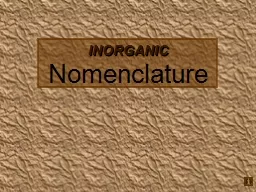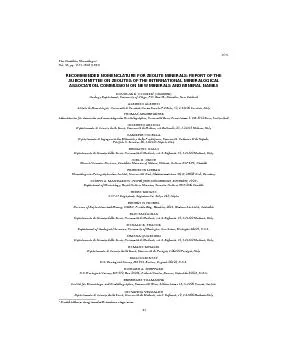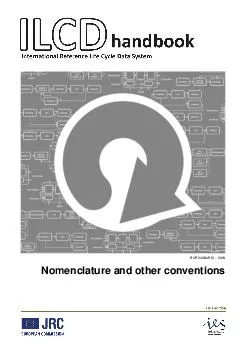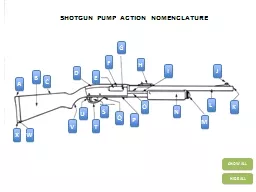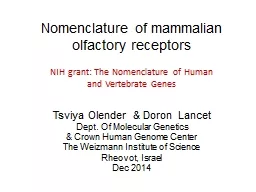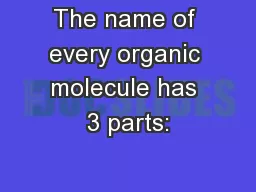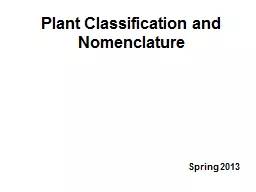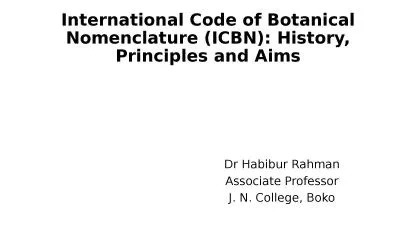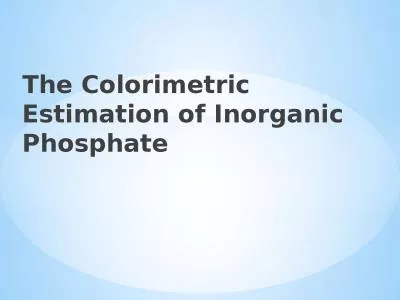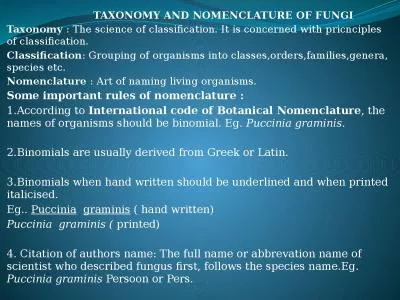PPT-INORGANIC Nomenclature
Author : calandra-battersby | Published Date : 2019-11-21
INORGANIC Nomenclature Nomenclature Humor Ferrous Wheel Fe iron Latin ferrum Fe 2 lower oxidation state ferr ous Fe 3 higher oxidation state ferr ic BaNa
Presentation Embed Code
Download Presentation
Download Presentation The PPT/PDF document "INORGANIC Nomenclature" is the property of its rightful owner. Permission is granted to download and print the materials on this website for personal, non-commercial use only, and to display it on your personal computer provided you do not modify the materials and that you retain all copyright notices contained in the materials. By downloading content from our website, you accept the terms of this agreement.
INORGANIC Nomenclature: Transcript
Download Rules Of Document
"INORGANIC Nomenclature"The content belongs to its owner. You may download and print it for personal use, without modification, and keep all copyright notices. By downloading, you agree to these terms.
Related Documents

